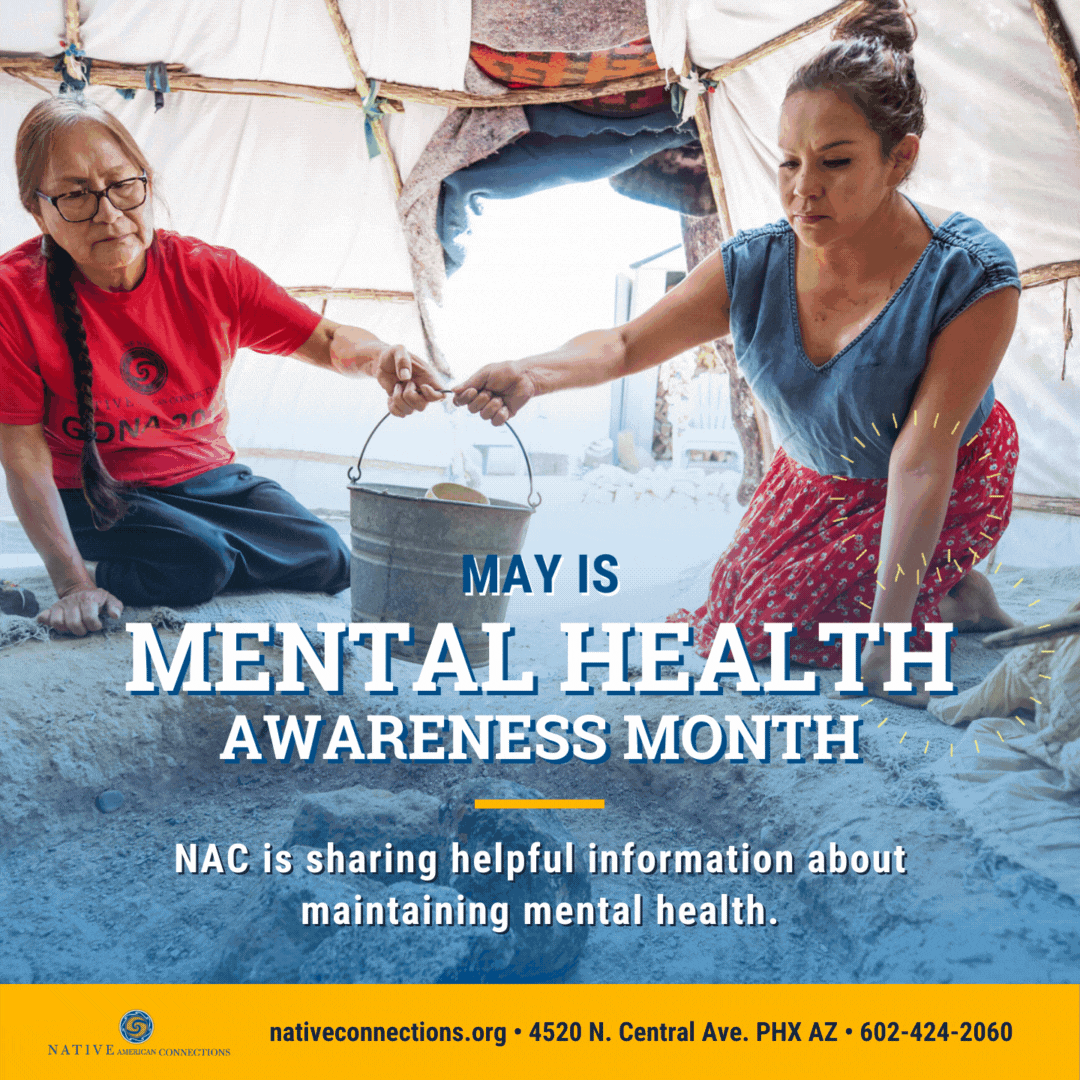apartmentApply to Osborn Pointe! Learn more about this 55+ community in Phoenix - NOW LEASING!

In June of 2020, 40% of adults in the U.S. reported struggling with substance abuse or mental health issues. The CDC suggests using community-level prevention and intervention efforts to address mental-health issues, which have been exacerbated by the pandemic. NAC believes that spirituality and culture are essential to growth and healing. This National Mental Health Month, Native American Connections shares its approach to addressing community mental health issues.
In June of 2020, 40 percent of adults in the United States reported struggling with mental health or substance use issues. The Centers for Disease Control and Prevention (CDC) suggests using community-level intervention and prevention efforts to address mental-health conditions, which have been exacerbated by the COVID-19 pandemic. Native American Connections (NAC) believes that culture and spirituality are essential to healing. This National Mental Health Month, NAC shares its approach to addressing community mental health issues.
“Mental health is essential for a person’s overall health. For generations, practices like talking circle, sweat lodge, songs and drumming have been used for purification and healing,” said Diana Yazzie Devine, CEO of Native American Connections. “At Native American Connections, these traditional healing ceremonies are interwoven with research-based practices for a holistic approach to healing the mind, body, and spirit.”
For NAC, holistic wellness, trauma-informed care, family healing, and 12-step programs are essential to recovery and treatment. “Talking Circle is a place for resolving trauma, and gives people the chance to speak heart-truth without interruption, criticism, or judgment,” said Yazzie. “The methodical sound of the drumming, the melody of a traditional song, the purifying smoke from smudging – all of these can be grounding, and put people in a calming state of mind to begin healing.”
Addressing mental health is the cornerstone for treating other co-occurring issues, such as substance use. Discovering and treating the root cause of an individual’s trauma is the first step on the path to healing the whole person. NAC believes that combining Native traditional healing practices and cultural arts with an evidence-based curriculum for addiction and substance use treatment is the best strategy for long-term recovery. Learn more about NAC's services and incorporation of traditional healing practices.
If you're struggling with maintaining your mental health, you are not alone. We all deserve the opportunity to address our mental health with the necessary resources and support. Check out more information on supporting your mental health at NAMI.org and take time to check in with the state of your mental health. Remember to reach out to your support system and treat yourself with kindness.
Find more information on outpatient, residential, and young adult recovery services here. Members of tribal communities interested in developing a referral program for substance use disorder treatment may call us at 602-254-3247 or email intake@nativeconnections.org.
Our traditions are the foundation of our organization - explore, learn, and utilize resources available for all.

Get the support you need with health, housing, and community services available at Native American Connections.

Your support changes lives and builds healthy communities. Find ways to get involved.

A "chronically homeless" individual is defined to mean a homeless individual with a disability who lives either in a place not meant for human habitation, a safe haven, or in an emergency shelter or in an institutional care facility if the individual has been living in the facility for fewer than ninety (90) days and had been living in a place not meant for human habitation, a safe haven or in an emergency shelter immediately before entering the institutional care facility. In order to meet the ‘‘chronically homeless’’ definition, the individual also must have been living as described above continuously for at least twelve (12) months or on at least four (4) separate occasions in the last three (3) years, where the combined occasions total a length of time of at least twelve (12) months. Each period separating the occasions must include at least seven (7) nights of living in a situation other than a place not meant for human habitation, in an emergency shelter or in a safe haven.
Federal nondiscrimination laws define a person with a disability to include any (1) individual with a physical or mental impairment that substantially limits one or more major life activities; (2) individual with a record of such impairment; or (3) individual who is regarded as having such an impairment. In general, a physical or mental impairment includes, but is not limited to, examples of conditions such as orthopedic, visual, speech and hearing impairments, cerebral palsy, autism, epilepsy, muscular dystrophy, multiple sclerosis, cancer, heart disease, diabetes, Human Immunodeficiency Virus (HIV), developmental disabilities, mental illness, drug addiction, and alcoholism.